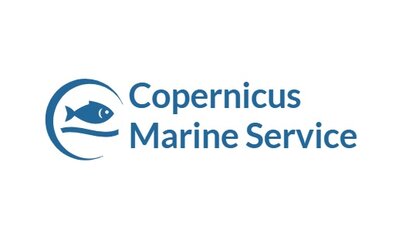Pierre-Yves Le Traon: Scientific Director Mercator Ocean
In an interview Pierre-Yves Le Traon from Mercator Ocean talks about the value of the oceans to society and how Sentinel-3 will benefit services that keep our seas safe and healthy.

Pierre-Yves Le Traon, an oceanographer, is the scientific director of Mercator Ocean and the research director at Ifremer. He is in charge of the scientific direction of Mercator Ocean and of the Copernicus Marine Environment Monitoring Service (CMEMS). As part of his Ifremer activities, he coordinates the French Investissement d’Avenir Novel Argo Ocean Observing System (NAOS) project and chairs the council of the European research infrastructure Euro-Argo ERIC. He is member of the board of EuroGOOS and of the international Argo steering team.
Pierre-Yves also co-chaired the operational oceanography international experiment GODAE. He is an expert, advising on satellite oceanography missions for space agencies such as CNES, ESA and Eumetsat and is a member of the ESA Earth Science Advisory Committee. Pierre-Yves has authored/co-authored more than 100 publications in international peer-reviewed literature. In 2012, he received the European Geophysical Union Fridtjof Nansen medal.
ESA: Why do we need to observe and monitor the oceans?
Pierre-Yves Le Traon
The oceans provide essential services to society. They regulate climate, they provide food and energy, and many economic activities depend on our seas and oceans. But our oceans and marine ecosystems are under threat. They are impacted by the effects of climate change, such as warming, sea-level rise, acidification and oxygen depletion, as well as from other human-induced pressures such as pollution, fishing and resource extraction. More than ever, there is a need to continuously observe and monitor the oceans. This is imperative to understanding and predicting the evolution of our weather and climate. Observations are also essential for a better and sustainable management of our oceans and seas to support the development of the blue economy.
Pierre-Yves Le Traon
The Copernicus Marine Environment Monitoring Service has been set up to answer these challenges. Mercator Ocean was tasked by the EU to implement the service. Our organisation is based on a strong European partnership with more than 50 marine operational and research centres in Europe that are involved in the service and its evolution. CMEMS provides a unique monitoring of the global ocean and European seas based on satellite and in situ observations and models. We monitor past (over the last 30 years) and current marine conditions and provide short-term forecasts.
ESA: What will CMEMS do with Sentinel-3 data?
Pierre-Yves Le Traon
Sentinel-3 is an essential mission for the Copernicus Marine and Environment Monitoring Service. This new mission will provide three fundamental ocean variables for us and the applications we are serving: sea level and ocean currents, sea-surface temperature and ocean colour (a measure of water quality and marine biology). Data from the mission will be used to improve our high-level data products and our ocean analyses and forecasts. About 70% of CMEMS products will be improved through Sentinel-3. Thanks to its space/time coverage we expect Sentinel-3’s altimeter, in particular, to improve our capabilities to forecast ocean currents. The synthetic aperture radar mode will also allow us to look at finer details of surface currents which should allow us to better address applications. The sea-surface temperature and ocean colour products will very accurate and will be used to reference other complementary satellite sea-surface temperature and ocean colour sensors. Their role will thus be essential. A key message is that the value of Sentinel-3 data and its benefits for applications will be greatly increased thanks to merging with other satellite data, in situ data and models.
ESA: What are CMEMS applications and who are the end users?
Pierre-Yves Le Traon
We provide a core European service on which many public and private downstream services and applications build on and develop. This approach is a clear success. In a couple of years more than 6000 users have registered to the service. They cover four areas of benefits (marine safety, marine resources, coastal/marine environment, weather and climate). Our users include both public (governmental and research) and private actors.
CMEMS provides, for example, forecasts of ocean currents that are used for ship routing, to support marine offshore operations or to predict the fate of marine pollution events. Our products are also used to monitor coastal water quality and threats such as eutrophication and the development of harmful algae blooms. This supports the marine aquaculture sector and European policies such as the Marine Strategy Framework directive. CMEMS products are also used to improve weather and seasonal forecasts such as El Nino forecasts and to monitor the impact of climate change on the oceans.
Sentinel-3 will have a major impact on many of the marine applications we serve. We are eager to ingest its data in our systems as soon as the data are operationally available!
Editor's note:
This is one in a series of interviews with some of the key people that are involved in the Sentinel-3 mission. Please check back as further interviews will be added in over the coming weeks.






